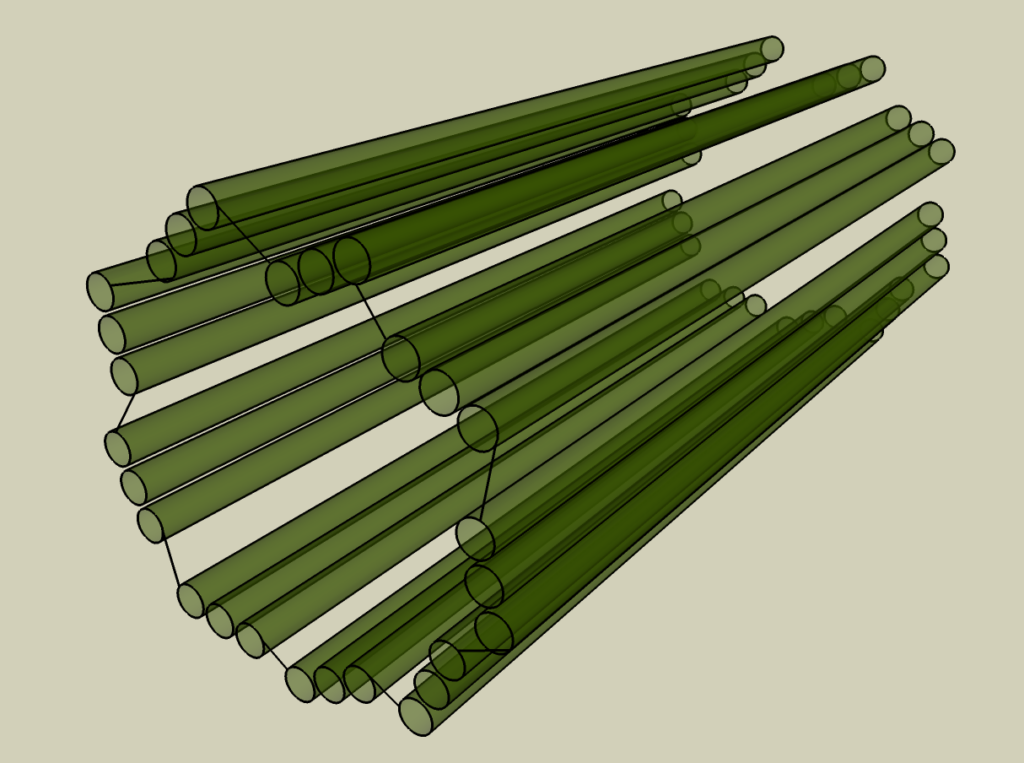Usually prokaryotic cells like bacteria don’t have centriole in their cytoplasm. As they are unicellular organisms. Centriole is present in eukaryotic cells like animal cells.
Prokaryotes do not contain centriole because the genetic material flows freely in cytoplasm. So there is no need of centriole in the cell division process in bacterial cell. Centriole is basically a eukaryotic cell organelle. Here we will discuss do prokaryotes have centrioles in the below section.
Is centriole prokaryotic or eukaryotic?
Centriole is an eukaryotic organelle. this is usually absent in prokaryotic cells. Centriole is a cylindrical organelle that presents near the nucleus in eukaryotic cells like animal cells.
Centriole is present in the all eukaryotic cells like animal cells. Prokaryotic cells don’t have centrioles. centrioles are the short micro tubular structures are present parallel to each other around a central cavity to make a cylinder in centrioles.
Centriole is present in the centrosome where these are paired to each other in a right angle. Centrosome is present near to nucleus in cytoplasm. Centriole can be seen in animal cells, fungi and few lower plants like chlamydomonas algae. Centriole is an important organelle in the formation of cilia and flagella Centrioles were first observed in animal cells by Boveri and Edouard Van Beneden.
Centriole is basically composed of tubulin protein and it is typically made of nine sets of microtubule triplets arranged in cylindrical form which ranges from 500nm to 200 nm in diameter. A cloud of protein material is present around the centrioles which is called pericentriolar material (PCM). PCM plays a pivotal role in the formation of spindle fibers.

centrioles mainly helps in the formation of spindle fibers which helps in the prophase stage of mitosis during cell division process .They also help in the formation of nucleolus, formation of cell plate, initiation of cell division.
These are mainly found in eukaryotic cells but not found in prokaryotes, flowering plants. Usually prokaryotes are unicellular organisms and these are considered be primitive ones. Every action in prokaryotes takes place only in cytoplasm. Prokaryotes can be referred by bacteria, mycoplasma, blue green algae, pleuropneumonia (PPLO).
Why are centrioles absent in prokaryotes?
centrioles are not seen in prokaryotic cells as they don’t require them. Prokaryotic cells are unicellular organisms.
Centrioles are absent in prokaryotes because the prokaryotic cells don’t contain membrane bound cell organelles. There is no need of centriole in cell division as the main function of centriole is the formation spindle fibers.
Centrioles are usually absent in prokaryotic cells like bacteria because prokaryotic cells are devoided of membrane bound cell organelles like mitochondria, lysosomes, Golgi complex, endoplasmic reticulum, nucleus , chloroplast but prokaryotes contain 70S ribosomes and we can also see the presence of mRNA ,tRNA, rRNA molecules .ribosomes helps in the synthesis of proteins which are needed for the cell for its activities. Bacterial cell is enveloped by a peptidoglycan layer which is known as cell wall. The cell wall of bacteria is known as mesosome.
Do bacterial cells have centrioles?
Bacterial cells don’t have centriole as they are unicellular organisms. Centriole is found mainly in eukaryotic cells.
Bacteria don’t have centriole as there is no need of centriole during cell division process because the genetic material flows easily in cytoplasm. Usually DNA in eukaryotic cells is organized in a linear form which present in chromosomes whereas bacterial DNA flows freely in cytoplasm and form loops like structures.
In eukaryotic cells genetic material is present in chromosomes so they need centriole in cell division process.
Comparison of Eukaryotic and Prokaryotic cell

Prokaryotes contain extra genomic DNA in addition to genetic material which is known as plasmid.
A plasmid helps in the development of resistance in bacteria towards antibiotics.
Centriole is not found in prokaryotes like bacteria because they don’t undergo mitosis during cell division. Bacteria don’t have real nucleus that means the genetic material is not surrounded by cell membrane. The DNA present in bacteria cell is referred as nucleoid.
Bacterial cell undergoes binary fission process during cell division and this kind of reproduction is called asexual reproduction process. During binary fission process the DNA replicates itself and attaches the copies of DNA to the several parts of the cell membrane. At the time of cell splitting the genetic material splits into parts and each one has duplicate DNA molecule. Hence there is no need of centriole in bacteria for cell division.
Read more about Eukaryotic Cells Vs Bacterial Cells: Detailed Insights
Frequently Asked Questions
Do prokaryotes have membrane bound cell organelles?
No prokaryotes don’t have cell organelles like mitochondria, Golgi- complex, endoplasmic reticulum, lysosomes, and chloroplast but they contain only cytoplasm.
Do eukaryotic cells have centriole?
Yes eukaryotic cells like animal cells have centriole which helps in cell division process. In animal cells centriole forms spindle fibers during prophase of mitosis process.
Do prokaryotes have nucleus?
No prokaryotes don’t have specific nucleus in cytoplasm. The genetic material flows freely in cytoplasm.
Do prokaryotes have plasmids?
Yes prokaryotes have plasmids. Plasmid is a extra genetic material present in the cytoplasm of bacterial cells in the circular form, which helps them to develop resistance against antibiotics.
- How to Whitewash Stone Fireplace:Step By Step,Technical Tips
- How to Dispose of Fireplace Ashes:Solution And Tips
- Car AC Smell Bad:7 Causes,Solutions,Facts And Expert Tips
- Driving Without Brake Pads:5 Critical Facts You Should Know!
- Is There a Warning Light for Low Transmission Fluid:Fix,Tips
- Coolant Coming Out of the Radiator Cap When Removed:5 Fixes
Also Read:
- Do plants absorb light
- Monoecious plants examples
- Do protists have a cell wall
- How is atp formed during photosynthesis 2
- Chloroplast
- Cellular respiration cycle
- Endocytosis molecular movement
- Is coenzyme molecule
- Is the cell wall rigid
- Monounsaturated fat vs polyunsaturated fat

Hi…I am Nagasrilakshmi Narne, a postgraduate in Biotechnology and English. also completed my B.Ed. I worked in Vimtalabs as a project trainee and I have work experience as a faculty of English. So I can explain topics in simple language.
Let’s connect through LinkedIn